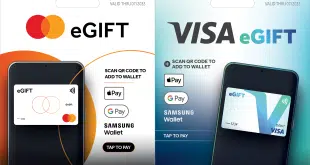Some billers have dismissed virtual cards because they assume the added interchange fees will increase their overall costs. Not true.
Billers looking for a way to take payments through a multitude of channels while also controlling costs need look no further than the existing card infrastructure, argues Blair Jeffery.
Blair Jeffery is senior vice president, sales and business development at Houston-based PreCash Inc. Reach him at blair.jeffery@precash.com.
The digital age is dramatically changing consumer bill-payment behavior and creating a challenge for the bill-pay ecosystem: meeting consumer demand while managing cost. Often this dilemma requires a complex fix, but sometimes there is a simple solution that is right under our nose.
We all know consumers want faster, more convenient bill payments without high fees. They also want options, and are constantly searching for something better. In fact, three of ten consumers changed the way they paid bills in 2010 over the previous two years, according to an Aite report. The rapid adoption of smart phones and tablets is expected to drive even more consumers to change. But millions also continue to pay bills in traditional ways.
The result is a wide, and expensive, array of traditional and emerging payment methods like cash, checks, money orders, mobile apps, kiosks, Internet portals, mobile photo capture, and the list goes on.
It is hard for businesses to balance what the consumer wants with the costs of execution. However, billers and payments processors know that offering choices is vital to a good customer experience and can ultimately reduce late payments, fees, and attrition.
As summarized in a 2012 white paper, Optimizing the Collection Portfolio, a Treasury Strategies survey of large insurance, cable, wireless, and utilities billers revealed that they believe offering multiple channels and methods to pay bills improves the customer experience. The billers also confirmed that they are concerned with the costs and complexity of managing extensive technology and data integration to accommodate payments from emerging channels.
Cards Without the Plastic
Why is it so complex and expensive? First, some payment vendors maintain separate systems for automated clearing house, card, cash, and money-order transactions through multiple channels like online, telephone, mobile, mail, and lockboxes. Second, by providing so many options, billers are at the mercy of the paying consumer and how they choose to pay. So, billers are left with a fragmented ecosystem where they manage multiple technologies, vendors, and back-office processes.
There’s a better way, and it already exists. Many banks, billers, and other businesses have used what are called virtual cards, or commercial cards, for years to pay their own invoices. But virtual cards can be used for consumer bill payments, as well. In fact, they are being used for consumer payments on a limited scale today, but there is some confusion regarding how they work and their benefits.
A virtual card payment is a Visa, MasterCard, or Discover payment without the plastic. It is a one-time-use virtual account number used for a single payment, and it works everywhere cards are accepted. Virtual cards use the same trusted, secure, open-loop payment platform used for all Visa, MasterCard, or Discover transactions.
Businesses use virtual cards to streamline operations, improve security and accuracy, reduce costs, accelerate payment delivery, improve cash flow, and reduce paper. These are the exact same things billers want to do when accepting consumer bill payments.
Virtual cards streamline operations because they can convert payments from any channel. For the consumer, the experience is similar to what is already in place for online and walk-in payments. First, the consumer provides their account information and their payment to a clerk, Web site, or kiosk. Next, instead of converting the payment to a slower lockbox or paper payment, the processor funds a virtual card and delivers the payment to the biller’s automated card-acceptance system.
That is the beauty of virtual card payments. The infrastructure is already in place, so there is no integration required by the biller. Billers can easily accept payments through their existing card-acceptance system—paper or electronic, new or old. Say good-bye to disparate systems, channels, and processes.
Long Track Record
Virtual cards are fast and dramatically accelerate average payment delivery time—cutting out two to three days or more when compared to ACH or paper payments. So if more payments were converted to virtual cards, it would help consumers avoid late fees and service interruption while also improving cash flow for billers.
Additionally, since consumers do not need a bank account to have a payment delivered with a virtual card, the technology can offer the speed and convenience of electronic payments to more people. Imagine the possibilities with the millions of underbanked consumers who largely continue to pay bills with paper.
Nonetheless, few billers realize how virtual cards improve consumer bill payments. Some billers have dismissed the idea because they assume the added interchange fees will increase their overall costs. Not true.
In its white paper, Treasury Strategies analyzed the most prolific bill-payment types and found card payments cost less when all factors are considered. The analysis takes into account bank and third-party processing fees, exception rates, and costs per exception for most bill-payment types. The total cost of accepting card payments was found to be 7% less than ACH transactions and more than 70% less than money orders. Card payments also have a long track record of being more accurate and secure.
The value proposition for converting consumer bill payments to virtual cards is clear. It is a simple way to use tools already at our disposal to solve a longstanding bill-payment issue—balancing consumer satisfaction with business costs.





